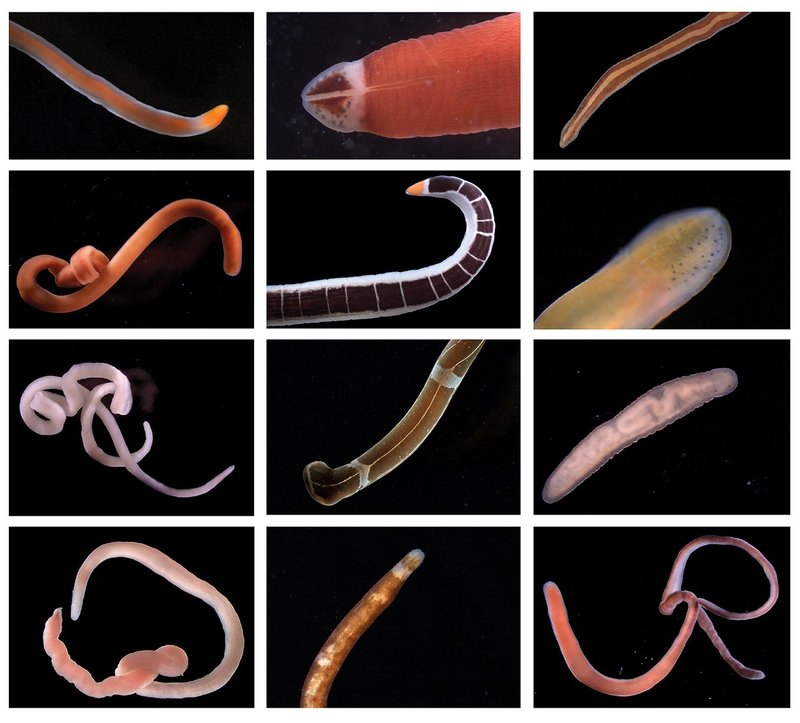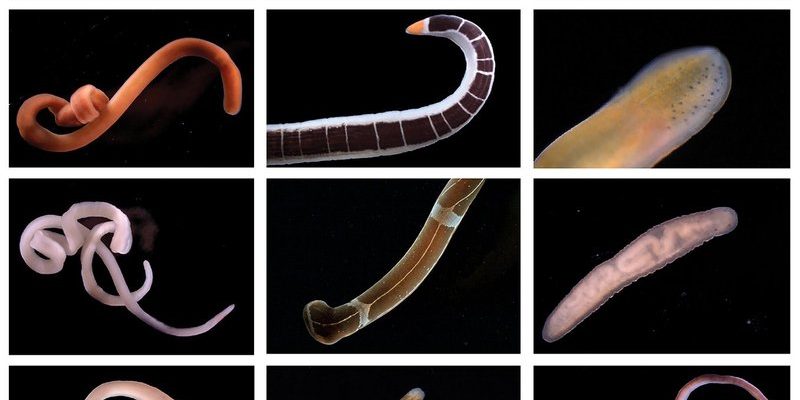
Picture a ribbon worm as a sort of silent worker bee in the watery world. They spend their lives doing tasks that keep the environment balanced, much like how bees pollinate flowers. Found in various habitats—ranging from tidal pools to freshwater streams—ribbon worms are part of a complex web of life. They play significant roles in controlling populations of small organisms, breaking down organic matter, and enriching the soil or sediment they inhabit. So, let’s dive into the many reasons why ribbon worms are ecological rock stars.
What Are Ribbon Worms?
Ribbon worms, or *Nemertea*, belong to a fascinating group of invertebrates that look like long, flat noodles. These worms can vary in size, from just a few millimeters to several meters long! You might find them in vibrant colors, adding a splash of life to the ocean floor.
They have a unique body structure that includes a long, muscular proboscis, which they use to capture prey. Think of this proboscis as a high-tech fishing line, enabling them to snag unsuspecting smaller creatures for a meal. Ribbon worms are generally found in marine environments, but some species have adapted to freshwater habitats. They thrive in places like muddy estuaries, sandy beaches, and even mangroves.
Interestingly, ribbon worms also possess remarkable regenerative abilities. If they lose part of their body, they can regenerate it, which is pretty cool! This ability isn’t just useful for the worm; it also makes them resilient against threats in their environment.
The Role of Ribbon Worms in Nutrient Cycling
Here’s the thing: healthy ecosystems thrive on nutrient cycling. Ribbon worms contribute to this process in a big way. They feed on organic matter, such as decaying plants and small animals. By breaking down this organic material, they help recycle nutrients back into the soil and water. This process is essential for plant growth and overall ecosystem health.
When ribbon worms consume organic debris, they convert it into forms that can be easily taken up by plants and other organisms. Imagine them as nature’s recyclers, turning waste into valuable resources. This not only supports plant life but also provides food for other animals in the food web.
Moreover, ribbon worms help maintain the quality of sediment in their habitats. Their feeding activities aerate the sediment, which enhances water circulation. This circulation is vital for the survival of other marine organisms, especially those that rely on healthy sediment for oxygen and nutrients.
Supporting Biodiversity
You might be wondering how ribbon worms contribute to biodiversity. The truth is, they create an environment where various species can thrive. By serving as prey for larger animals, like fish and birds, they help sustain a balanced food web.
Additionally, ribbon worms often coexist with other organisms, sharing their habitats with various species. Their presence can indicate a healthy ecosystem—if ribbon worms are thriving, it usually means that the environment can support a diverse array of life. In this way, they help foster an ecosystem that supports everything from tiny plankton to larger predators.
Furthermore, some ribbon worms have symbiotic relationships with other marine species. This means they can form partnerships that benefit both parties, like sharing resources or providing protection. Such interactions are key components of healthy and resilient ecosystems.
Impacts on Environmental Health
Ribbon worms also play a crucial role in maintaining environmental health. They can act as bioindicators, which means their presence and health can provide insights into the condition of their habitats. If ribbon worms are declining or absent, it might indicate problems such as pollution or habitat degradation.
For example, changes in water quality directly impact the health of ribbon worms. If the water becomes too polluted, you may find fewer of these worms in the ecosystem. Monitoring their populations can help scientists assess the overall health of marine and freshwater environments, guiding conservation efforts.
In addition, ribbon worms can help mitigate the effects of some human activities. By breaking down dead organic matter and recycling nutrients, they can offset some of the negative impacts of pollution. However, this balance can be disrupted by overfishing and habitat destruction, emphasizing the need for conservation measures.
How Climate Change Affects Ribbon Worms
Climate change poses significant challenges for ribbon worms and their habitats. Rising ocean temperatures and acidification can negatively impact their populations and the ecosystems they support. As water temperatures rise, the delicate balance of marine life can be disrupted, affecting everything from food sources to reproduction.
Moreover, ocean acidification can alter the chemical composition of the water, making it harder for ribbon worms and other organisms to thrive. These changes may lead to shifts in food availability, further impacting their populations. Just like a domino effect, the decline of ribbon worms can have ripple effects throughout the entire ecosystem.
In light of these challenges, it’s essential to consider how we can protect these vital creatures. Supporting conservation efforts and reducing carbon emissions can help mitigate some of the impacts of climate change on ribbon worms and the broader environment.
Conservation and Future Outlook
Given the ecological importance of ribbon worms, conservation is crucial. Protecting their habitats is essential for maintaining their populations and the health of the ecosystems they inhabit. This can involve preserving mangroves, estuaries, and marine reserves that provide safe environments for these creatures.
Community awareness plays a significant role in conservation efforts. Educating others about the importance of ribbon worms can lead to greater support for initiatives aimed at protecting these organisms and their habitats. Simple actions, like reducing plastic waste and cleaning up local waterways, can make a difference.
The future of ribbon worms depends on our commitment to safeguarding the environments they call home. By understanding their ecological significance, we can promote healthier ecosystems for years to come.
In conclusion, ribbon worms might not be the most glamorous creatures in the ocean, but their ecological importance is undeniable. From nutrient cycling to supporting biodiversity, these unsung heroes are vital for maintaining the health of our ecosystems. By appreciating and protecting them, we ensure a balanced and thriving natural world for generations to come.

